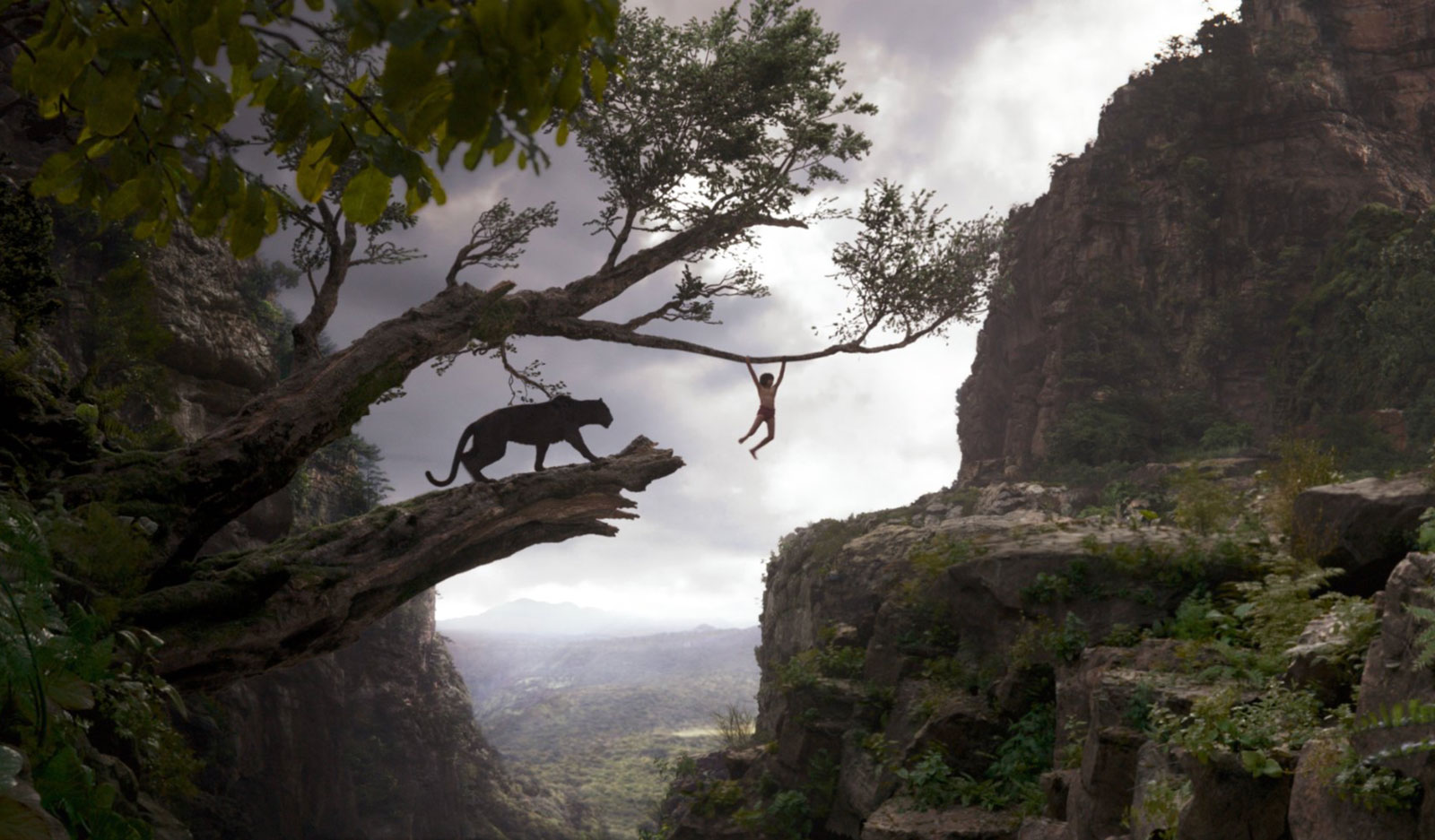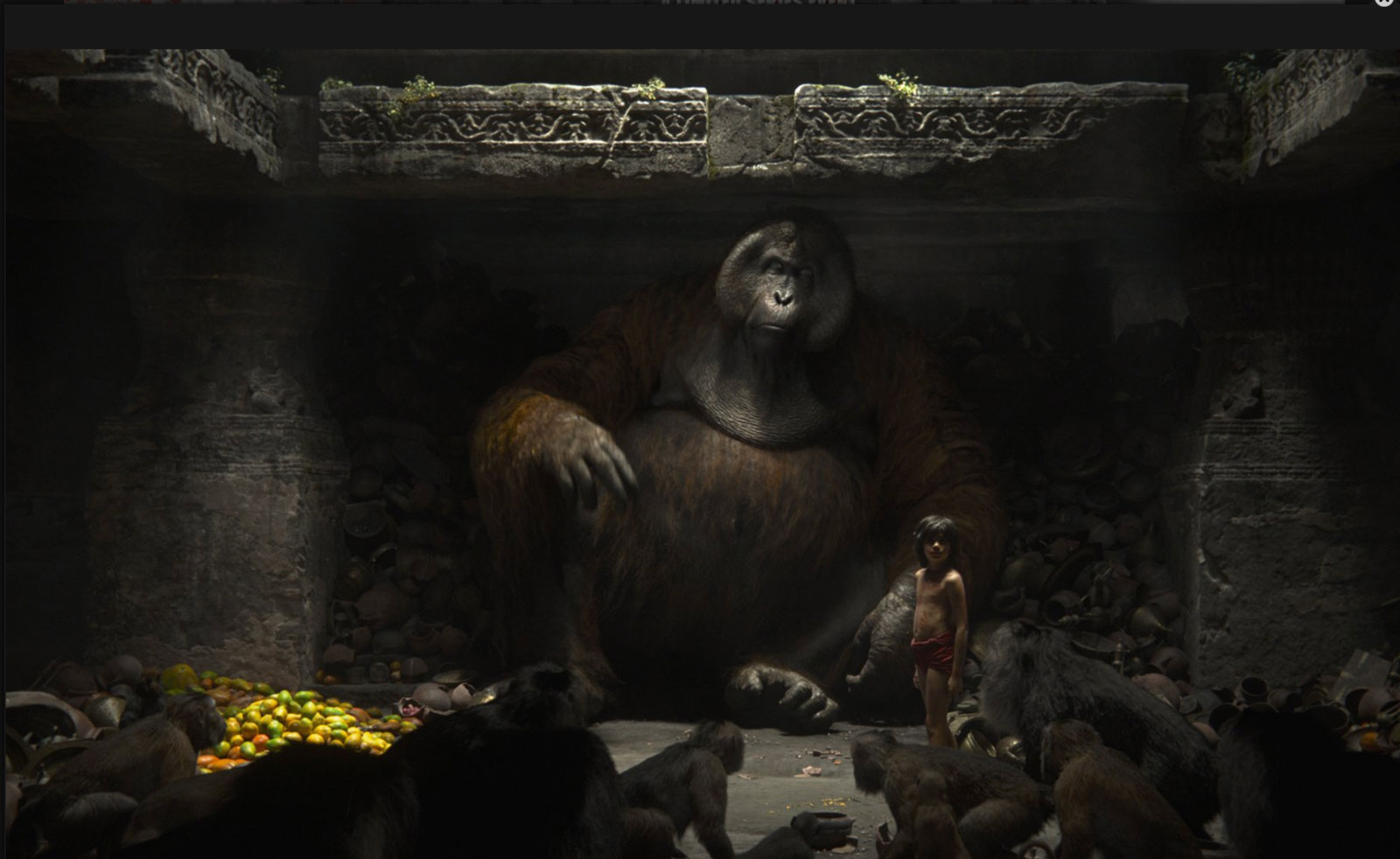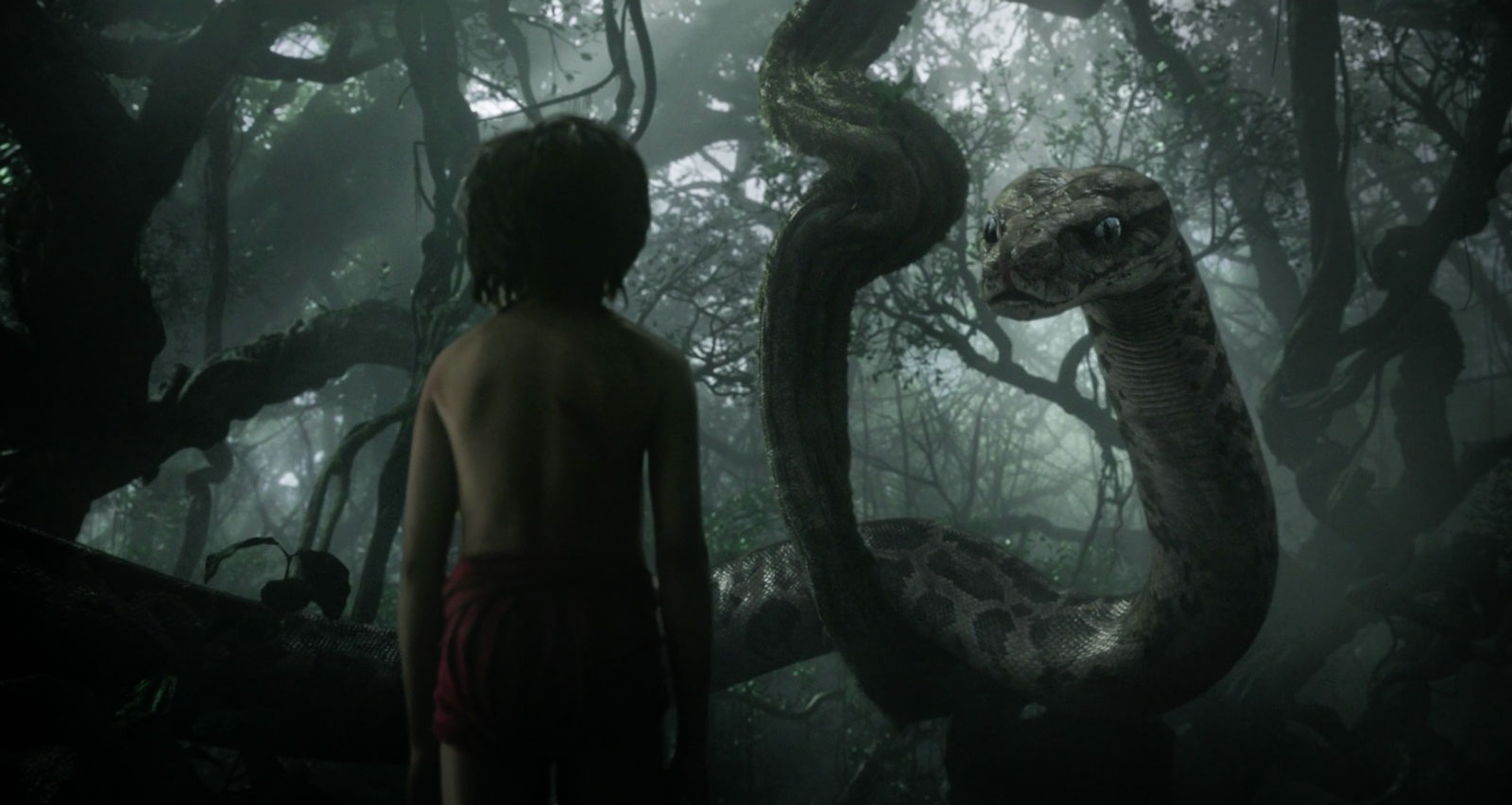The new special-effects-driven The Jungle Book film from Walt Disney Pictures is a remake, of course, but a remake of what exactly? When the Disney studios first took on Rudyard Kipling’s Mowgli stories for the 1967 classic animated production, fidelity to the book—first published in 1894, when Kipling was living with his American wife in the not very jungle-like hills of southern Vermont—was on nobody’s mind. (“We have foxes,” Kipling wrote of his placid surroundings, “and now and then a bear kills a calf or a pig…”) Walt Disney, who died in 1966 during the film’s production, thought an early draft of the screenplay was too dark for family viewing and gave a new writer a copy of Kipling’s book. “The first thing I want you to do,” he reportedly said, “is not to read it.”
Kipling’s vivid narrative had been driven less by tooth and claw than by psychological conflict. The abandoned man-cub Mowgli is torn between his wild identity as a brother of the wolves who adopt him, and his dawning sense—as he is tutored by Bagheera, the black panther born in captivity—that he rightly belongs among men. “I am two Mowgli’s,” he laments. “These two things fight together in me as the snakes fight in the spring.” Freud understandably adored the book.
The new film—already a hit, with one of the largest-grossing opening weekends ever—is no closer to the book except, perhaps, in that it too may prove too dark, as Disney feared, for many families. Rather than conventional animation, the film, directed by Jon Favreau (Elf, Iron Man, and the recent father-and-son idyll Chef), relies on a complicated mix of CGI technology and live action to render its digitally designed jungle creatures alongside the boy Mowgli, adorably played by newcomer Neel Sethi, a younger Dudley Moore. In some ways, it is quite like the 1967 version, from which it adopts many plot elements; audience members where I saw it, in western Massachusetts, could be heard happily singing along with “The Bare Necessities” (sung by Bill Murray’s bumptious bear, Baloo) and “I Wan’na Be Like You” (Christopher Walken’s sinister Louie, King of the Apes). Gone, alas, are the four mop-headed vultures modeled on the Beatles, but I didn’t miss the human love interest, a comely native lass whom Disney inserted at the end as sufficient motivation for Mowgli to leave his happy wolf family and rejoin the man-village.
Parts of the new film have a goofy, happy-go-lucky charm, a throwback to the Sixties version. Children will enjoy the cartoonish shenanigans—more Winnie-the-Pooh than Kipling—of Bill Murray’s Baloo, who cons Sethi’s Mowgli into helping him fetch honey for hibernation. “Winter is coming,” he murmurs, as though he plans to spend it at Winterfell. When Bagheera (wonderfully voiced by a dignified Ben Kingsley) points out scornfully that bears don’t hibernate in the jungle, Baloo counters that he takes a lot of naps. Nothing could be sunnier than Kipling’s notion, reproduced at too great length in the film, that a scarcity economy—like the terrible drought that reveals the Peace Rock in the parched river—yields cooperation and harmony (the Water Truce!) among the suffering animals.
And yet, for the most part this new Jungle Book is shockingly dark, replacing the psychological conflict and nuanced family dynamics of Kipling’s original stories with sporadic violence and a pervasive air of menace. The film begins with Mowgli running, and has more chase scenes than a Bond flick. The rogue tiger Shere Khan (James Bond candidate Idris Elba, whose voice sounds, to my American ears, uncannily like Alan Rickman’s) is out to get his revenge on Mowgli’s birth-father, who blinded him with fire in an encounter in a cave before abandoning his “man-cub” in terror. Since we’re meant to root for Shere Khan’s demise, his crimes are magnified: he casually kills Mowgli’s wolf-father, Akela, for refusing to yield up Mowgli, and threatens to kill one of his cuddly wolf-brothers. (None of this comes from Kipling, whose wolves and tiger maintain a warily respectful detente.) Like other bad guys in the film, Shere Khan’s face, gnarly and scarred with one blind eye, is heavily anthropomorphized, sinisterly expressive as a tiger’s face probably wouldn’t be. Kipling’s Mowgli traps Shere Khan under stampeding cattle; in Favreau’s film, the final mano-a-mano between Mowgli and Shere Khan is more direct, visceral, and scary, again more like a Bond film than a cuddly romp in the jungle.
A word about those CGI animals. Despite demurral from some critics, they seemed perfectly lifelike—even alive—to me, despite the fact that they speak English, and say things you might not expect—a porcupine, for example, declaring, “My bad.” They are certainly as believable as Alejandro Iñárritu’s marauding grizzly bear in The Revenant. (Iñárritu, by the way, was slated to direct a competing version of The Jungle Book, now delayed until fall 2018, but Birdman and Bearman—oops, I mean The Revenant—got in the way.) The talking animals seem more real, in any case, than Favreau’s digital jungle habitat, festooned with breathtaking waterfalls, primordial trees, and an ancient abandoned palace overgrown with vines. But then, Kipling, born in Bombay and a newspaper journalist in northern India during his precocious teens, had never seen the forests of central India where he set his Mowgli tales, so an element of dream-generated imagery seems appropriate.
Advertisement
The elimination of a human mate for Mowgli, and of any mention of his human mother, whose presence is a major development in Kipling’s book, where competing claims between Mowgli’s presumptive birth-mother and his adoptive wolf-mother remain poignantly unresolved, means that there’s only one major female character left in the film: Lupita Nyong’o’s subtly understated mother-wolf, Raksha. “I’ll come back to visit,” Mowgli says, as he heads off to try (unsuccessfully) to return to his human village. “You will always be my son,” Raksha says.
But Kaa, the mostly benevolent python of Kipling’s book, already turned into a villain in the 1967 film, has now undergone a sex change as well, and is equipped with one of the most famously seductive voices in the movies, that of Scarlett Johansson. (Cate Blanchett will assume the role in the 2018 film.) A nightmare version of the smothering mother, she wraps Mowgli in her coils and whispers the tale of his origins, until, as she’s getting ready to swallow him, he’s saved—like some surreal outtake from Lost in Translation—by Bill Murray’s bear.
For grownups in the audience there are additional pleasures. As the monkeys (modeled, Kipling claimed, on lawless democratic Americans) lead kidnapped Mowgli to Louie’s ancient stronghold, in a scene redolent of Apocalypse Now, we almost expect Dennis Hopper to spring out of the stone vaults and start reciting Kipling’s “If—.” In fact, Walken’s sinister ape (borrowing not from Kipling but from Edgar Rice Burroughs’s early-twentieth-century, white supremacist Tarzan series) lurks invisibly in the shadows, his voice, and then his demeanor, unmistakably mimicking Brando’s. Louie’s pursuit of Mowgli through the passageways of the abandoned palace will scare the living daylights out of most children, and he dies in the kind of grim and theatrical way reserved for all the villains in this film.
Musical numbers have mainly been pared from this film (leaving more space for violence) and we get, instead, reverential recitations of Kipling’s versified—and, according to a recently discovered Kipling letter, filched from Inuit sources—Law of the Jungle: “For the strength of the Pack is the Wolf, and the strength of the Wolf is the Pack…”—even after Bill Murray’s (perhaps adlibbed?) dismissal of it. “That’s not a song,” he says scornfully. “That’s propaganda.” For a moment, we expect that the film might go off in a less cruelly authoritarian, and maybe even in an antiwar, direction. But no. If banding together with the other animals to exterminate Shere Khan—whose main enemy, understandably and forgivably, is the human race—is meant to be an example of the proper functioning of the law, maybe we could stand a little bit less of it.





